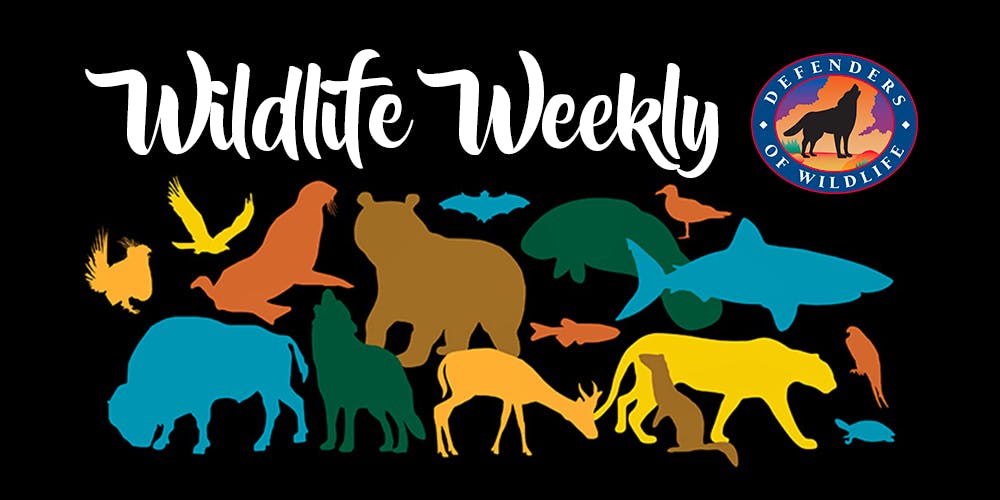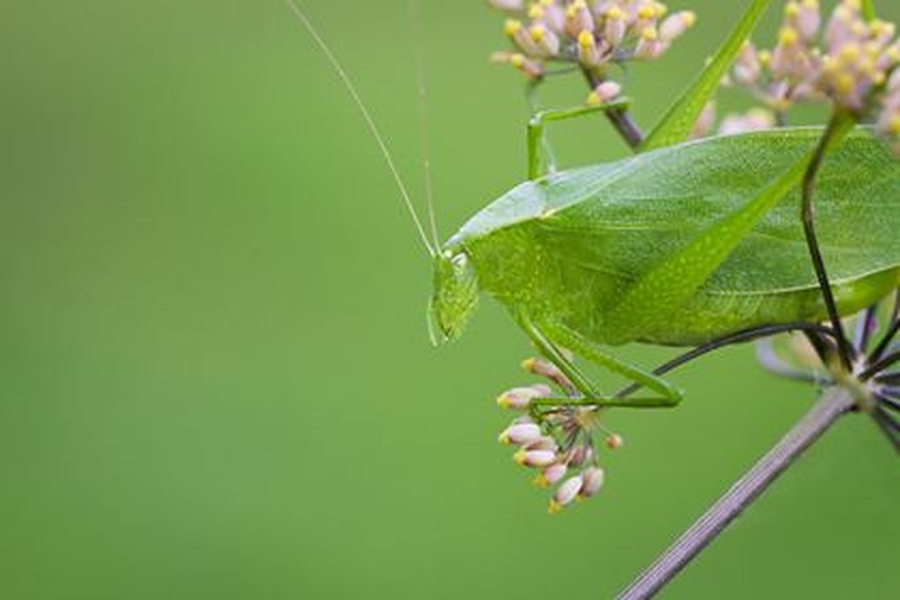Your weekly roundup of wildlife news from across the country.
“Each of these bills will have devastating effects on the law that has helped us to save gray wolves, Florida manatees, California condors, loggerhead sea turtles and hundreds of other species of endangered wildlife. With the current extinction crisis faced by our planet, we need a strong and intact Endangered Species Act.” – Jamie Rappaport Clark, president & CEO of Defenders of Wildlife dfnd.us/2xkdIWO
The Trump administration is taking steps to dismantle the framework of regulations that protect our wildlife, land, air and water and the very agencies that oversee them. Find out more and how you can take action! http://dfnd.us/2eTFQFO
The cost of clean: wind energy is driving the deaths of thousands of bats. Find out what can be done now to protect bats and grow our green energy future: http://dfnd.us/2h3SVRm
A recent search led to the discovery of more than half a dozen sharks, including ones of a protected species, swimming inside of an above ground pool in a New York home’s basement: thttp://dfnd.us/2vKN0Tz

In the Southeast:
 In the heart of the Southern Appalachians, a new collaborative effort is emerging to address one of the greatest challenges facing wildlife in a human-dominated landscape: habitat fragmentation from roads and other transportation infrastructure. In an era of climate change and increasing urbanization, the ability to migrate between patches of suitable habitat is essential to the survival of many species. Defenders has joined forces with the National Parks Conservation Association, The Wilderness Society, the National Park Service, the U.S. Forest Service, Rocky Mountain Elk Foundation, the Eastern Band of Cherokee Indians, and others to explore how we might reduce road mortality and improve connectivity for wide-ranging species in the Southern Appalachians. First up, the Interstate 40 corridor between Asheville, North Carolina and Knoxville, Tennessee – a massive and extremely hazardous barrier to wildlife movements that bisects the entire landscape.
In the heart of the Southern Appalachians, a new collaborative effort is emerging to address one of the greatest challenges facing wildlife in a human-dominated landscape: habitat fragmentation from roads and other transportation infrastructure. In an era of climate change and increasing urbanization, the ability to migrate between patches of suitable habitat is essential to the survival of many species. Defenders has joined forces with the National Parks Conservation Association, The Wilderness Society, the National Park Service, the U.S. Forest Service, Rocky Mountain Elk Foundation, the Eastern Band of Cherokee Indians, and others to explore how we might reduce road mortality and improve connectivity for wide-ranging species in the Southern Appalachians. First up, the Interstate 40 corridor between Asheville, North Carolina and Knoxville, Tennessee – a massive and extremely hazardous barrier to wildlife movements that bisects the entire landscape.
As part of our initial efforts, we’ve been setting camera traps to identify wildlife corridors in the lands surrounding I-40 to identify key migration corridors, to help pinpoint high risk road crossing areas and look for features we might utilize to improve habitat connectivity. We identified several key corridors and have already learned a great deal about local species migration during our spring and summer camera trapping season. We will continue this important project in the years to come as we work to reconnect the living landscape of the Southern Appalachians.
In Washington D.C.:
 At our headquarters on September 14, 2017, Alejandra Goyenechea presented to delegates from several African countries about the international conservation work being done by Defenders. These delegates were invited to the U.S. by the Department of State’s International Visitor Leadership Program so that they could assess the efforts made in the U.S. to deter wildlife trafficking, explore ways that non-governmental organizations coordinate on federal and state levels to discourage wildlife trafficking, and examine the harmful impact of international wildlife trafficking on environmental stability. These delegates came from a variety of government and non-governmental groups, including ministry officials whose lives are committed to combating poaching. Alejandra discussed the strides being taken by the U.S. Fish and Wildlife Service, including their Forensics Laboratory, to prevent wildlife trafficking. She also highlighted the series of workshops Defenders helped lead in Peru to assist local and regional law enforcement in fighting illegal shark fin trafficking. Sharing knowledge between government and non-government groups has proven to be an effective way to combat wildlife trafficking and we look forward to continuing to coordinate with other groups to further these conservation goals!
At our headquarters on September 14, 2017, Alejandra Goyenechea presented to delegates from several African countries about the international conservation work being done by Defenders. These delegates were invited to the U.S. by the Department of State’s International Visitor Leadership Program so that they could assess the efforts made in the U.S. to deter wildlife trafficking, explore ways that non-governmental organizations coordinate on federal and state levels to discourage wildlife trafficking, and examine the harmful impact of international wildlife trafficking on environmental stability. These delegates came from a variety of government and non-governmental groups, including ministry officials whose lives are committed to combating poaching. Alejandra discussed the strides being taken by the U.S. Fish and Wildlife Service, including their Forensics Laboratory, to prevent wildlife trafficking. She also highlighted the series of workshops Defenders helped lead in Peru to assist local and regional law enforcement in fighting illegal shark fin trafficking. Sharing knowledge between government and non-government groups has proven to be an effective way to combat wildlife trafficking and we look forward to continuing to coordinate with other groups to further these conservation goals!
In Alaska:
 Defenders was a partner in the nine-month planning for the first ever Belugas Count! event held in Anchorage on September 9th. This citizen science event attracted over 1,200 people who participated and provided sightings for 260 belugas. The Anchorage mayor contributed a proclamation (above) recognizing the event. Our Alaska office served on the planning committee and provided the logo, web page space to advertise the event and scopes and other field equipment for the event. The event was the first of what will be an annual event seeking to embolden citizen science data collection efforts like the one Defenders helped launch in 2008. The recent Cook Inlet beluga population count estimates the population at 328 animals, within a range of 279 and 386, the National Oceanic and Atmospheric Administration reports.
Defenders was a partner in the nine-month planning for the first ever Belugas Count! event held in Anchorage on September 9th. This citizen science event attracted over 1,200 people who participated and provided sightings for 260 belugas. The Anchorage mayor contributed a proclamation (above) recognizing the event. Our Alaska office served on the planning committee and provided the logo, web page space to advertise the event and scopes and other field equipment for the event. The event was the first of what will be an annual event seeking to embolden citizen science data collection efforts like the one Defenders helped launch in 2008. The recent Cook Inlet beluga population count estimates the population at 328 animals, within a range of 279 and 386, the National Oceanic and Atmospheric Administration reports.









Follow Defenders of Wildlife
facebook twitter instagram youtube tiktok threads